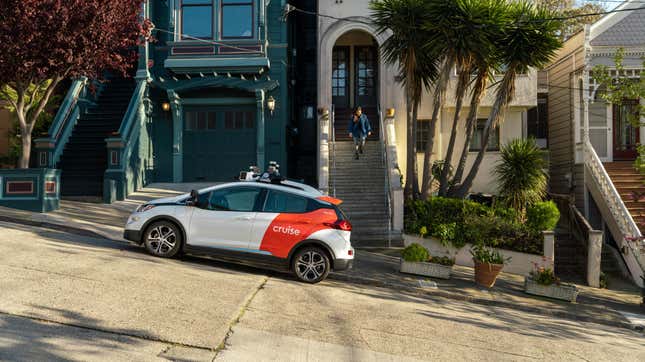
General Motors recalled 950 of its Cruise robotaxis on Wednesday after a pedestrian was dragged under the vehicle in San Francisco last month. The company said the recall was “voluntary” and would include a software update to its autonomous vehicles’ post-collision response.
The National Highway Traffic Safety Administration (NHTSA) confirmed in a report that Cruise vehicles’ Collision Detection Subsystem, responsible for detecting when a collision occurs, is supposed to stop or pull to the side of the road. An investigation found that the system isn’t correctly identifying the appropriate reaction and is continuing to pull over, thus dragging what it hit, instead of coming to a complete stop.
Cruise and the NHTSA claim the issue can be resolved with a software update that was already successfully updated in its supervised test fleet, Cruise said in a press release Wednesday. The NHTSA said the new update will be deployed in Cruise’s driverless vehicles before they are put back on the road, adding if the software update was in place, the car would have stopped in the October 2 collision.
“Although we determined that a similar collision with a risk of serious injury could have recurred every 10 million - 100 million miles of driving on average prior to the software update, we strive to continually improve and to make these events even rarer,” Cruise said in its press release. “As our software improves, it is likely we will file additional recalls to inform both NHTSA and the public of updates to enhance safety across our fleet.”
A Cruise spokesperson said in an email to Gizmodo that issues with the driverless vehicles’ Collision Detection Subsystem and other factors, including the DMV’s decision “and the desire to improve trust in the communities in which Cruise operates, led Cruise to pause the operation of its driverless fleet.”
In the interim, Cruise hired a chief safety officer to oversee the company’s safety review and investigations and says it is implementing additional improvements including putting advanced tools and processes in place to review safety, testing, and validation processes.
The company claims it will also solicit feedback from its stakeholders and change how it communicates with the public, customers, regulators, employees, and the media, although it did not specify how it plans to implement the changes.
The software update is in response to the accident last month when a pedestrian crossing the street was struck by a vehicle and thrown into the path of a Cruise driverless taxi. She was dragged approximately 20 feet as the vehicle pulled over, forcing Cruise to suspend its operations nationwide on Oct. 28 after California regulators determined the vehicles posed a hazard to public safety.